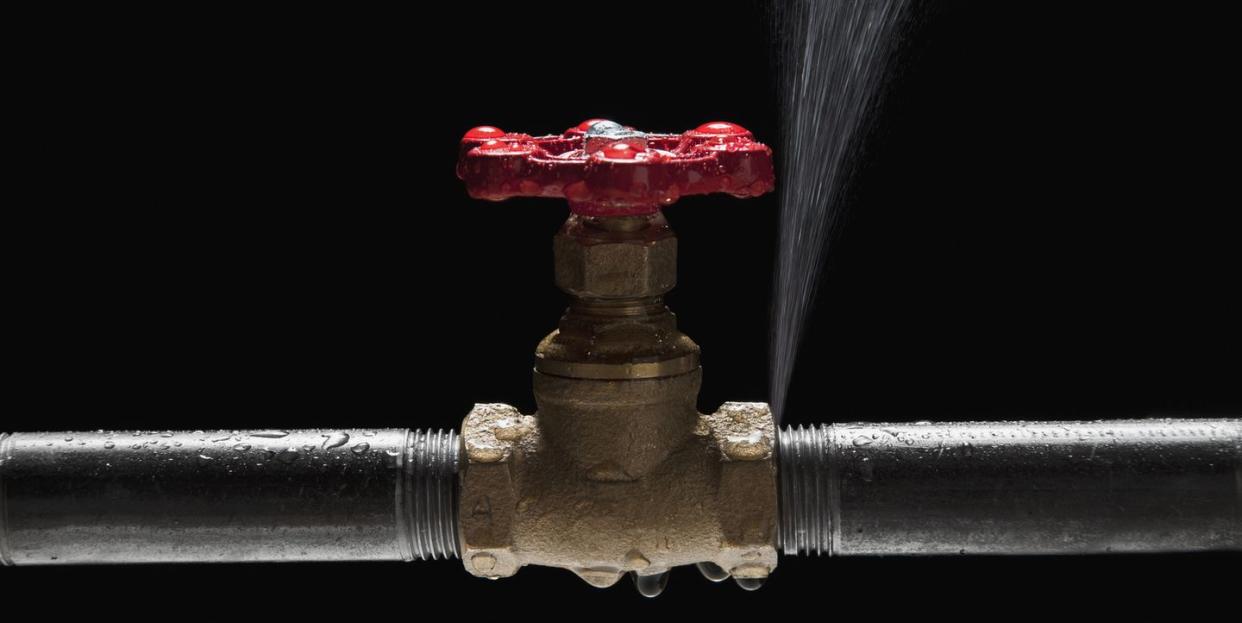This Neural Net Can Detect Leaky Pipes in Mere Seconds

Australian researchers have developed an artificial neural network that can diagnose springs in water distribution pipes with a stunning level of accuracy.
Their system looks for topological features in pipes, like junctions, to locate and characterize leaks with 95 percent accuracy.
The study was published in the June 2020 edition of the Journal of Water Resources Planning and Management.
The U.S. has a major water and sewage infrastructure problem. Our subterranean pipes span 1.6 million miles and have reached an average age of about 45 years—meaning these workhorses hearken back to the age of 8-track tapes, the invention of the Rubik's cube, and 46-cent jugs of milk. Naturally, they're prone to leaks and due for a big upgrade.
The problem? Traditional approaches used to detect springs in pipes—from visual inspection, to electromagnetic methods, to acoustic and ultrasonic processes—are outmoded, time-consuming, and sluggish.
But new research from the University of Adelaide in Australia shows artificial intelligence is remarkably capable of diagnosing leaky pipes.
Led by Jessica Bohorquez, a Ph.D. candidate at the university's School of Civil, Environmental, and Mining Engineering, the new work relies on an artificial neural network to identify topological elements of a pipe network, like junctions, to pinpoint and characterize leaks with near-pristine accuracy. The team published its research in the June 2020 edition of the Journal of Water Resources Planning and Management.
Neural nets take a biological approach to computation, building up connections between bits of data like how our own brains form associations between neurons. Bohorquez's method is data-driven and doesn't require any detailed simulation models of the pipelines to detect cracks. Rather, the neural network "learns" how to find junctions over time as it's fed more and more examples from existing schematics or historical data.
To train the neural net, the researchers set up two tests: one where it needed to identify a junction in a pipe, and another scenario where it had to find leaks.
In the first test, the scientists tried out four different sample sizes: 500, 1,000, 5,000, and 10,000 pressure readings from locations along a 1,000-meter pipe. The result: Testing 5,000 sites along a 1,000-meter pipe created the most accurate results with the least amount of computation. It took just over four hours to train the neural net for the task.
In the second task, the neural net needed a larger input data set to identify leaks. The neural net made far more accurate predictions about where the pipe's leaks were when the team fed it 25,000 or 50,000 pressure readings along the pipe. Interestingly, the neural net was less accurate in its predictions closer to the ends of the pipes, as opposed to the central portions, because there's more variation in pressure at those locations.
Overall, the neural net could accurately predict junction locations with 95 percent accuracy, and could detect leak locations with an error of less than 3 millimeters in 95 percent of cases.
Because this research only used numerically derived data from hydraulic systems, future work will focus on more complex systems. Plus, the researchers will need to test the system in the field. Bohorquez and her colleagues expect the system's accuracy to drop when it's tested on a real pipeline due to structural complexities.
"These results demonstrate the outstanding potential of using machine learning techniques and fluid transient waves for the location of topological elements and anomalies in pipelines," the authors note in the paper. "The approach proposed is fast, accurate, and data-driven."
You Might Also Like

